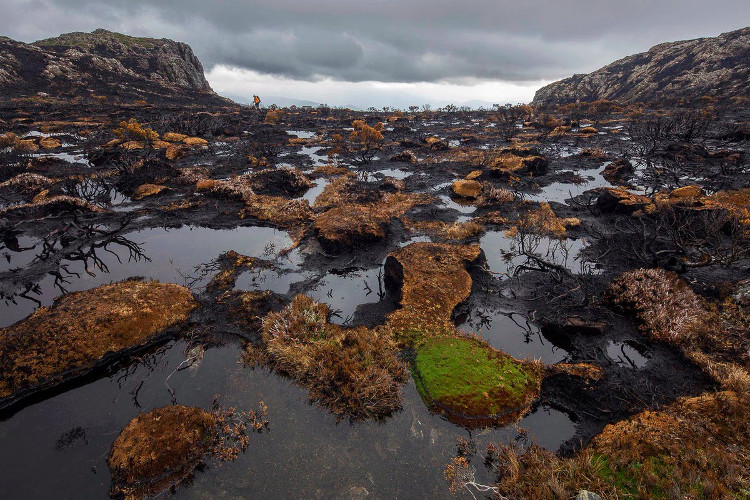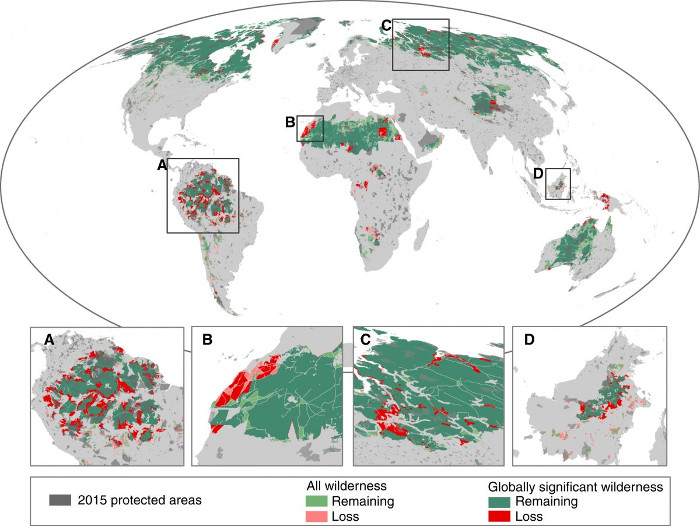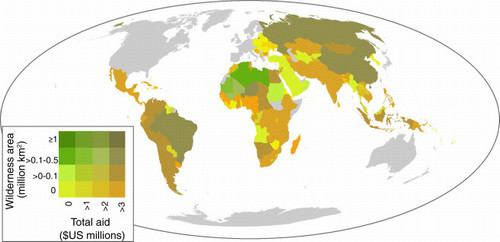In just 25 years, we have destroyed 10% of the wild on Earth
An international team of researchers has conducted a project to map wild areas on Earth. Comparing data from the 1990s, the team discovered that many wild areas on Earth had completely disappeared.
According to the latest study published in Current Biology, an average of 132,000 square kilometers of wilderness are lost each year, which is the speed of the Earth's wilderness decline over the past 25 years.
Using data in the 1990s, the team found that about 3.3 million square kilometers of wilderness were destroyed in 1993 by mining, logging, and construction projects. human infrastructure.

Vegetation on Lake Mackenzie, Tasmania, Australia was destroyed after the fire earlier this year.(Photo: Rob Blakers).
According to the study, the wilderness is the region that has "intact ecosystems and landscapes, and most are free (national parks often charge)" . Activities to destroy this area such as the conversion of land to industrial land, creating a high density of industrial activities that disturb ecosystems.
"The number of wilderness lost in the past two decades has been amazing and disturbing," said James Watson, a member of the research team, from the University of Queensland and the New Wildlife Conservation Association. York, said.
Currently, wild areas account for only 23% of the total area on Earth.

The status map of the wilds all over the world, blue shows the wild areas that exist, red shows their disappearance.(Photo: James EM Watson, et al).

The level of distribution of wild areas around the world.(Photo: James EM Watson, et al).
The regions experiencing the largest decline in wilderness are Amazon (nearly 1/3) and Central Africa (14% loss). However, according to the researchers, the more alarming is the speed of destroying the wilderness faster than the rate at which we built protected areas. At the same time, the newly created nature reserve is only 2.5 million km 2 .
"You cannot restore the natural wilderness area once they have disappeared, biological processes that underlie the natural ecosystem have disappeared, and it will not be able to return to its original state. " Researcher James EM Watson from the University of Queensland and the New York Wildlife Conservation Association explained.
- The disaster of 13,000 years ago predicted that the Earth was about to be destroyed?
- The vain assumptions about the day the Earth was destroyed
- Describe the reality of death when the Earth was perished
- Scientists think that these are the eight most likely cases of life eradication
- Life on Earth will be destroyed after 3 billion years
- Earth will be destroyed in October 2017 by a giant mysterious planet?
- How will the earth be destroyed within 500 years?
- Earth is gradually being destroyed by human negligence
- Earth will be destroyed in April 2036?
- The collision destroyed more than 3 billion years ago
- 7 perspective of the destruction of the Earth
- Found the Balkan feral cat that seemed to be extinct
 Is the magnetic North Pole shift dangerous to humanity?
Is the magnetic North Pole shift dangerous to humanity? Washington legalizes the recycling of human bodies into fertilizer
Washington legalizes the recycling of human bodies into fertilizer Lightning stone - the mysterious guest
Lightning stone - the mysterious guest Stunned by the mysterious sunset, strange appearance
Stunned by the mysterious sunset, strange appearance